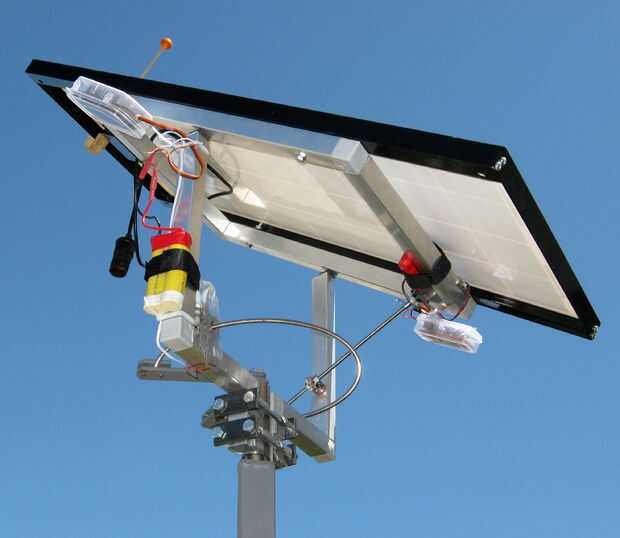To harness as much solar energy as possible, collection surface must always be perpendicular to the sun’s rays and this can only be achieved if modules are equipped with a solar tracking mechanism.
Using these mechanisms, total energy received in a day can be up to 35% higher compared to that received by a static module.
This difference in performance is reduced in cases of frequent cloudy days and in all those weather conditions in which the relationship between energy received by direct radiation and that received by diffuse radiation tends to decrease. That is why it is only recommended to use it in areas of low cloudiness.
A detailed analysis must be carried out to verify that performance increase achieved more than compensates for energy consumption and the cost and maintenance of monitoring mechanisms.
The two types of movement are:
1. Single axis: only allows rotation around a horizontal, vertical or inclined axis. You can track sun azimuth or height, but not both at the same time.

2. 2-axis: in addition to the east-west rotation movement, a second rotary movement on a horizontal axis is also possible by varying the module angle with respect to the horizontal plane. They can be monopost (a single central support) or carrousel (several supports distributed along a circular surface).

We can find different solar tracking systems. The most common are:
1. Passive tracking systems: These devices do not use electricity or have a motor. There are two North American patents. The first (Robbins Engineering) is based on Freon gas pressure expansion and contraction contained in two cylinders located on each side of the structure. The second (Zomeworks) is a gravity system based on the variation of the weight of a fluid contained in a container that when evaporated passes to another.
2. Tracking by sensors: the sensor is the element that allows the detection and measurement of the lack of direction between the sun vector and the normal to capture surface. The sensor is usually made up of pairs of photosensitive elements mounted on the module and moving in solidarity with it.
The photosensors use direct solar radiation to detect sun position. Tracking impossibility when sun occultations occur and need to spend time recovering address when sun reappears are inherent characteristics of all systems of tracking based on photosensors.
Deviation detected by the photosensors transmits an actuation signal that controls motors operation to achieve module movement. Constant speed motors are often used that operate intermittently so that the addressing error is kept within a tolerance band.
Systems using photosensors are used for small and medium systems.
Between one day’s sunset and the next day’s sunrise, the module must be placed in the sunrise position because once the sun has risen, much time would be lost in the 180º turn necessary to regain direction. For this, a clock is used that generates the appropriate order.
3. Tracking by calculated coordinates: this system follows sun position by calculating its astronomical coordinates and does not require solar rays physical presence. This circumstance renders coordinate systems immune to cloudy days and other circumstances that can produce addressing errors in a photosensor, as happens for example with flashes.
The use of computer controlled systems has the additional advantage that certain changes can be made at software level only.
It can also include additional functions such as bringing the modules to a position of maximum security against inclement weather or the return at night.
Sopelia has developed Solar Layout, the Android App that allows to obtain the inclination, orientation and distance between rows of photovoltaic modules at the installation site.
This content was extracted from the Commercial Technical Manual of Photovoltaic Solar Energy and is part of Sopelia Solar e-learning.
All you need is Sun. All you need is Sopelia.


